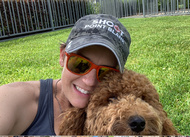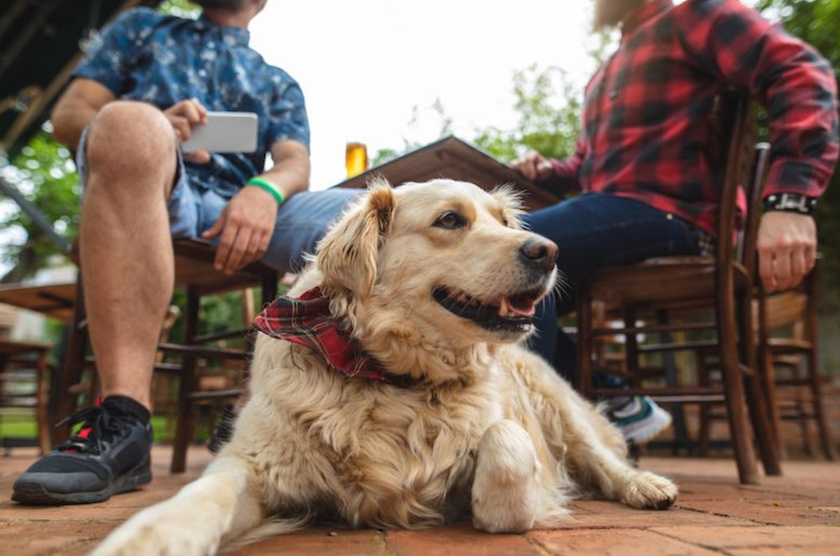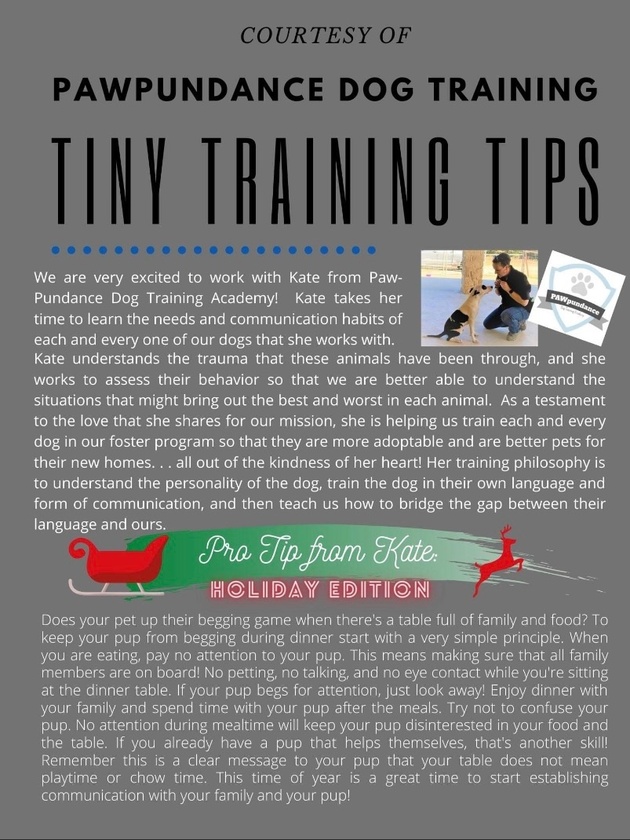
It’s ok! We’re here to help. We speak a little dog and can help translate for both of you. It’s probably just a miscommunication! And we are here to help get you both speaking the same language! Woof!
Connect with the PAWpundance training team and other members of the dog community to discuss better ways to communicate with your furry house guest.
**To get started USE code: TRIAL1month **
Body Communication: Understanding Our Dogs
We often use the term “body language” to describe how dogs communicate through their physical actions. However, “body language” may be a misnomer, as language implies the transfer of specific thoughts and ideas, whereas communication simply conveys emotion and tone. For humans, language is nuanced and complex, involving words and phrases to convey distinct ideas. In contrast, dogs communicate through signals that reflect their emotions and states of mind, rather than specific ideas. For this reason, “body communication” may be a more accurate term when discussing how dogs use posture, movement, and sounds to express themselves.
How Dogs Communicate Emotion
When dogs bark, they’re not necessarily “saying” anything specific. Instead, they use pitch, volume, and rhythm to convey emotion, from excitement to fear or warning. Unlike humans, dogs don’t rely on a formal language structure to express ideas.
Humans, on the other hand, typically communicate thoughts and ideas verbally. Though we also use body communication, many of us are unaware of the subtle cues we give off and often react rather than respond thoughtfully. For example, we might maintain direct eye contact, stand with squared shoulders, and use open palms to show honesty. When interacting with dogs, however, these gestures can have a different effect: direct eye contact can feel intimidating, squared shoulders may seem confrontational, and a pat on the top of the head can be misinterpreted as overbearing. Dogs, in contrast, use softer eye contact, look-aways, and gentle, off-center body angles to show calmness and approachability.
How Dogs Observe Us
Dogs constantly monitor our body movements, much like a hearing-impaired person might watch for visual cues. Our dogs are highly attuned to our center of gravity, which gives them a clue to our next move. They watch our hips for forward and backward shifts and our chest and shoulders for signs of height or spatial adjustments. If we bend over a dog, for instance, they might jump up to match our level. Eye contact, too, can convey emotion and intention in powerful ways.
Using Body Movements to Guide Behavior
If I want a dog to sit without using verbal cues, I adopt a soft, angled stance rather than standing squarely in front of the dog, which might feel confrontational. To help guide them into a sit, I use my hips to gently rock forward, which can coax the dog to shift their weight back into a sitting position. By drawing attention to my eyes and keeping movements calm and subtle, the dog feels encouraged rather than pressured.
When guiding a dog to lie down, it’s a similar process. I maintain a calm stance and slightly lower my chest, inviting the dog to follow my lead. Initially, this may involve more dramatic shifts, but over time, it becomes a matter of subtle cues and a natural response from the dog.
Cues vs. Body Communication
Over time, body communication can support verbal cues, reinforcing them through consistent reactions. Karen Pryor’s book Don’t Shoot the Dog! discusses this concept, called “stimulus control.” For effective stimulus control, a dog should:
1. Respond to the cue consistently when given.
2. Avoid “offering” the behavior without the cue.
3. Avoid confusing cues or behaviors (e.g., performing “down” when asked to “sit”).
4. Refrain from performing anything unrelated or ignoring the cue entirely.
Understanding Body Communication in Dogs
Body communication is about reacting to each other’s movements and signals. Dogs who were well-socialized as puppies often respond readily to these subtle cues. However, not all dogs pick up on typical dog communication signals, whether due to fear, anxiety, or conditioning from previous environments. For some dogs, especially those who are anxious or who have missed early socialization, these cues might need reinforcing through training or even behavior therapy. If your dog struggles with reading or responding to cues, it may be beneficial to work with a trainer to assess underlying issues.
The Importance of Learning Canine Communication
Just as we might learn phrases in a new language when visiting a foreign country, it’s important to learn our dogs’ cues to create a shared understanding. Familiarizing ourselves with dog communication shows empathy and builds a stronger relationship. Noted authors like Turid Rugaas and Sarah Kalnajs have produced excellent resources on dog body communication. For example, Rugaas’s works provide insights into “calming signals,” a concept that describes how dogs use subtle cues to signal peace or reassurance to each other.
Conclusion: Communication is a Shared Journey
Building a mutual understanding with your dog requires patience, observation, and, often, the guidance of a professional. It’s a journey in learning how to interpret each other’s signals and respond with compassion. As you continue working with your dog, remember that both of you are learning together. For further insights, feel free to reach out, ask questions, or share videos!
Welcome to PAWpundance Dog Training Academy on Locals.com!
We’re thrilled that you’ve joined our community! PAWpundance is a place for positive, dog-loving people to come together, share experiences, and help each other grow. Locals offers an “ad-free experience,” so even a small contribution helps support our tech and keeps our community thriving.
We want to see your furbabies!
We’re here to assist with any questions you may have about training, behavior, and more. At PAWpundance, we believe in blending knowledge with a bit of fun—expect plenty of paws, puns, and maybe even a dance or two! Together, let’s enjoy some laughs and build stronger relationships with our pups.
Our Philosophy:
We’ve invited another species to live in our homes, and our dogs are much more than accessories; they’re our guests. They don’t speak our language, and like in the movie E.T., we don’t want to be the intimidating figures trying to coerce a scared, confused being. Instead, we want to be like ...
Eye Contact, Eye Contact, Eye Contact!
Reward every glance. Start by reinforcing brief glances, then encourage your pup to hold your gaze a bit longer. Gradually phase out your part of the eye contact—your pup will learn to watch you and adapt to your movements naturally. This approach helps them learn to walk with you without relying on leash cues.
Remember, the leash is purely for safety—not for communication.
Take a look at this video with Meghan and Buckee. Buckee is watching Meghan closely, and she rewards him by making eye contact, smiling, and offering treats. Meghan also looks forward occasionally, teaching Buckee to walk with her in sync.
Notice that Buckee is a reactive pup, so the leash is essential for safety, especially if he responds to something unexpectedly. However, it’s only used for physical control when necessary. When Buckee refocuses, Meghan reestablishes instructional control, and they continue their walk together. She does a fantastic job of engaging with him! In ...
Loose-Leash Walking Tip:
Where you reward makes a big difference! Try using the hand on the same side as your dog when giving treats or praise.
When you reach across your body to reward with the opposite hand, it draws your dog’s nose in front of you, encouraging them to move ahead and potentially start pulling.
In the video of Meghan and Domino, Meghan holds the leash with her left hand while Domino walks on her right. She rewards him by petting and giving treats with her right hand. This keeps Domino walking by her side on a loose leash, rather than in front, pulling her along.
Next time you’re out walking with your pup, try rewarding with the hand on the same side as your dog.
https://twitter.com/wholedogjournal/status/1295508215740932098?s=21
How to teach you pup to be a good dining companion! What a great skill!

https://twitter.com/wholedogjournal/status/1292609106637987840?s=21
This is about counter-surfers, but I love the description of trying to shame dogs. This author, Pat Miller helped me understand this concept in her book the Power of Positive Dog Training.
If you’re still on Twitter, the Whole Dog Journal is a great group to follow. Lots of fantastic info!













